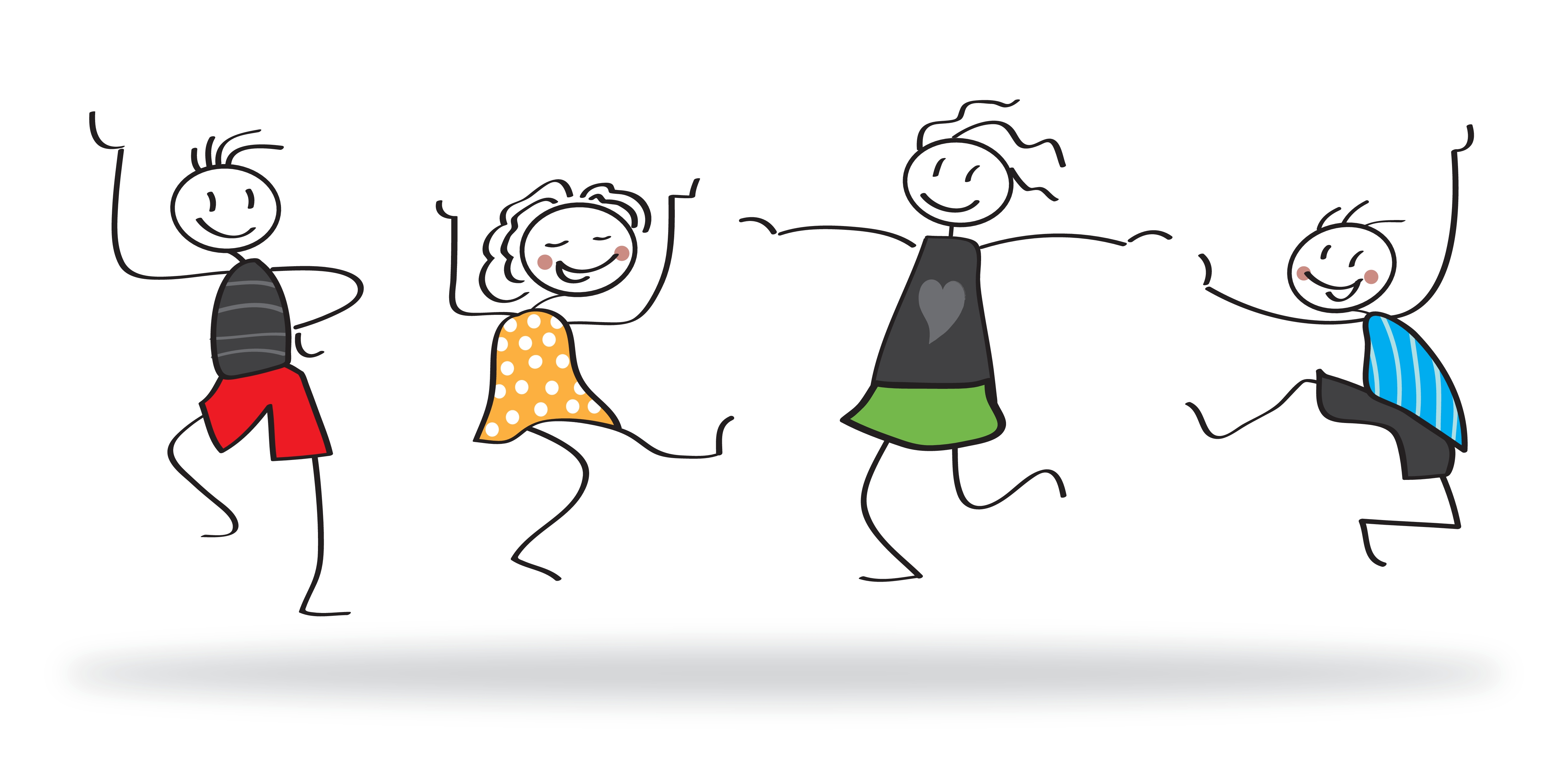
(model photo: colourbox.com/Stanislav Tiplyashin)
Smiling is infectious,
you catch it like the flu,
when someone smiled at me today,
I started smiling too.
(Author Unknown)
Smiling – a common pattern that paves the way to laughter. There are many sayings about smiling, like “A smile says more than 1.000 words”, “You’re never fully dressed without a smile”, and “Life is short, smile while you still have teeth”; even Jimmy Fallon once said “Everyone looks so much better when they smile.” The study of laughter and its psychological and physiological effects on the body is called gelotology. It involves therapies such as laughter meditation and laughter yoga. Since the life of a scientist isn’t always filled with joy, happiness, and easy-to-do-plus-huge-outcome experiments, I thought that it was time to think about ways to help ourselves to feel better.
In case of emergency: smile
The following situation might sound familiar to most of us: We are extra-early at work to start some bad-ass experiment and then we find our super-expensive and slowly growing cells for the experiment contaminated with some nasty bacteria – isn’t that the perfect moment to smile? Well, it is indeed! Let me tell you one thing: The answer to most things is not 42, but it is raising those Merkel-like corners of the mouth, tensing around 43 muscles, and show-off those teeth – et voilà, the perfect smile is served.

(image from colourbox.com)
The reason for this strange advice is very simple: Smiling puts us in a good mood. Based on the so-called Facial-Feedback-Hypothesis, the working group around Fritz Strack has investigated the influence of people’s facial activity on their affective responses (Strack et al. 1988). Here, subjects had to watch funny cartoons while they were either freely able to smile or while they were prevented from smiling by holding a pen in their mouth (yep, try it out!). Interestingly, the subjects indeed reported more intense humour responses when cartoons were presented while they could laugh freely. This and further experiments revealed that our brain doesn’t care whether there’s an actual cause for a smile or whether we just proactively start smiling – the muscles involved with that process subsequently stimulate neurons that trigger the release of feel good hormones (Seaward et al. 2006). As soon as a smile flashes our face, neuropeptides like dopamine, endorphins, and serotonin are released as 100% organic relaxants and pain killers (Lane et al. 2000). Feel good hormones also have anti-inflammatory effects, relieve anxiety, and positively influence our perception. Serotonin for example serves as an anti-depressant and mood lifter, which is why many pharmaceutical anti-depressants also influence the release of serotonin in the brain (Karren et al. 2010). At this point I certainly have to mention that chocolate can also serve as a natural source for happiness: When containing 85% cocoa, it has 2.9 µg serotonin per gram (Guillén-Casla et al. 2012). However, the effect of consuming serotonin from external sources vanishes quickly, which is why I recommend to always place a chocolate bar in very close proximity.
A smile to remember
I tried hard to find a single negative thing about smiling, and the only one I found was that it exponentially increases the likelihood of collecting erratic insects between one’s teeth whilst riding a bike – that’s it. Putting on a smile is surprisingly simple, since human beings are well-equipped with bunches of muscles that intrinsically know what to do in case a fluffy puppy or a potential partner comes along. Scientists around Arnaud D’Argembeau and Martial Van der Linden analysed whether the encoding of new facial identities in memory is influenced by the type of expression displayed by the face. Interestingly, they found out that people who smile are more easily remembered. The study showed that faces and the people attached to them were better recognised when showing a happy rather than an angry expression. They suggested that the affective meaning of facial expressions automatically modulates the encoding of facial identity in memory (D’Argembeau and Van der Linden 2007). Thus, the woman displayed on Leonardo da Vinci’s famous painting “Mona Lisa” must be smiling, otherwise we wouldn’t remember her that well.

(image from colourbox.com)
But there’s more to a smile than just the better remembrance of faces. Several (or probably some more than just several) years ago, when we were chubby little babies, we used to smile up to 400 times a day. In contrast to that, adults on average only smile 15 times per day – a vicious circle, because that’s indeed very sad. While growing up to school kids and university students, we are taught that life has to be serious. The tone is: If you’re laughing, you’re not learning. This development is quite unfortunate, since tools like e.g. cartoon sketches help us to understand and remember things better. This phenomenon has been investigated scientifically by Kirsty Nielson, who wanted to know whether a good laugh after a learning phase would influence a subject’s memory. And it indeed did: People who laughed 30 minutes after studying were significantly better at remembering what they had just learned than others (Nielson 2007). Furthermore, the working group around Gurinder Bains aimed to find out whether humour and the accompanied smile have an effect on our short-term memory. In their study, they let a group of subjects watch a humorous video while a control group just sat in a waiting room. Afterwards, the subjects underwent a memory test where those who had been laughing before showed significantly better memory than the controls (Bains et al. 2014). Thus, it looks like our short-term memory is a matter of laughing.
Smiles are always in fashion

(image from colourbox.com)
Since we’re already on the science-road, let’s have a look at another important – if not the most important – effect of smiling: It burns calories. Maciej Buchowski looked deeper into this topic and in his study he estimates that 10-15 minutes of laughter a day can burn up to 40 calories. Let’s just think about that for a minute: During incubation time in the lab we could just sit down, fire off some jokes, and immediately burn the two “Schoko-Bons” we illegally had after breakfast – sounds like a dream come true! Here’s some material for your personal joke repertoire:
“I wasn’t that drunk yesterday.”
“Oh boy you took the shower head in your arms and told it to stop crying.”
Or:
I was reading a book on anti-gravity. I found it difficult to put down.
Well, the actually important fact I wanted to place here was that smiling also relieves pain. In a Swiss study, Willibald Ruch found out that a good laugh increases our pain tolerance even 30 minutes after watching a funny movie (Ruch 2007). Findings like this one also explain why Hunter Doherty “Patch” Adams, a physician played by the late Robin Williams in the movie of the same name, founded the “Gesundheit! Institute” in the United States in 1971. Every year, Adams organises groups of volunteers to travel around the world and bring humour to orphans, patients, and other people. In his point of view, humour and play are essential to physical and emotional health, which is why he urges his medical students to develop compassionate connections with their patients. Thus, when the next experiment fails – just laugh a little and the pain will be over soon.
Wiggle, wiggle, wiggle

(image from colourbox.com)
When we feel happy, we smile. Dogs wag their tails, pigs grunt, and cats purr. Smiling for 60 to 90 seconds will immediately make us feel better. In times of ongoing digitalisation, we all seem to be more connected than ever and our (digital) friends list is way longer than Merlin’s beard. But it definitely puts one important thing to the past: The actual contact with other human beings. After “Gammelfleischparty” (party for people older than 30 years) and “Niveaulimbo” (senseless conversations between teenagers), the young people’s word of the year 2016 was “Smombie” – a portmanteau word constructed from smartphone and zombie. It describes people who are in constant contact with everyone – besides the people standing next to them. Lately, I innocuously asked friends, and actually also myself, whether they proactively make eye contact and smile at strangers – not to tease, not to benefit from it, simply to be nice. The answers were diverse, but the overall tone showed that most of us have alienated during the past years – knowing- or unknowingly. Since I am a scientist I accepted this result as a challenge and started to randomly search for eye contact with people on my way to and back from work. Not to tease, not to benefit from it, simply to be nice. During my field study, I soon realised that many people would actually like to share a short moment of eye contact and sometimes even a smile, but many also seemed a little afraid. After all that we’ve learned about smiling during the past five or so minutes, let’s do ourselves and others a favour and crack those grumpy faces, spread some feel good hormones, and kill some calories – keep smiling and keep shining!
PS: If you have better jokes than me, feel free to share them with us in the comments section below!
References
Bains, G. S., Berk, L. S., Daher, N., Lohman, E., Schwab, E., Petrofsky, J., and Deshpande, P. (2014). The effect of humor on short-term memory in older adults: a new component for whole-person wellness. Adv Mind Body Med, 28(2):16-24.
Buchowski, M. S., Majchrzak, K. M., Blomquist, K., Chen, K. Y., Byrne, D. W., and Bachorowski, J. A. (2007). Energy expenditure of genuine laughter. Int J Obes, 31(1):131-7.
D’Argembeau, A. and Van der Linden, M. (2007). Facial expressions of emotion influence memory for facial identity in an automatic way. Emotion, 7(3):507-15.
Guillén-Casla, V., Rosales-Conrado, N., León-González, M. E., Pérez-Arribas, L. V., Polo-Díez., L. M. (2012). Determination of serotonin and its precursors in chocolate samples by capillary liquid chromatography with mass spectrometry detection. Journal of Chromatography A, 1232:158-165.
Karren, K. J., Hafen, B. Q., Smith, N. L., Frandsen, K. J. (2010). Mind/Body Health: The Effect of Attitudes, Emotions and Relationships. New York, N.Y.: Benjamin Cummings, 2010:461.
Lane, R. D. (2000). Neural correlates of conscious emotional experience. In R.D. Lane & L. Nadel (Eds.), Cognitive neuroscience of emotion (pp. 345–370). New York: Oxford University Press.
Nielson, K. A. (2007). Positive and Negative Sources of Emotional Arousal Enhance Long-Term Word-List Retention When Induced as Long as 30 Min After Learning. Neurobiology of Learning and Memory, Vol. 88, No. 1: 40-47.
Ruch, W. (2007). The sense of humor: Explorations of a personality characteristic. Berlin: Mouton de Gruyter.
Seaward, B. L. Managing Stress: Principles and Strategies for Health and Well-Being. Sudbury, Mass.: Jones and Bartlett; 2009:258
Strack, F., Martin, L. L., and Stepper, S. (1988). Inhibiting and facilitating conditions of the human smile: A nonobtrusive test of the facial feedback hypothesis. Journal of Personality and Social Psychology, 54(5), 768-777.

Sophie Schonauer

I would not say that these jokes are better than yours, but I had the feeling to share them 😉
A snowman sniffs, “Hm, funny, I smell carrots…”
And
Q: What do politicians and diapers have in common?
–
A: Both should be changed regularly, and both for the same reason.
Hope you enjoy it 🙂
Pingback: Lab Fails – your pain is our gain! (part 2) | ImmunosensationBlog